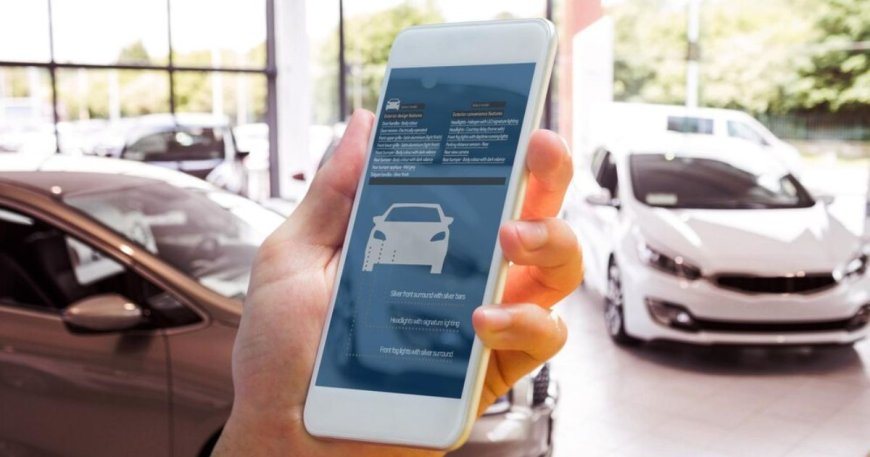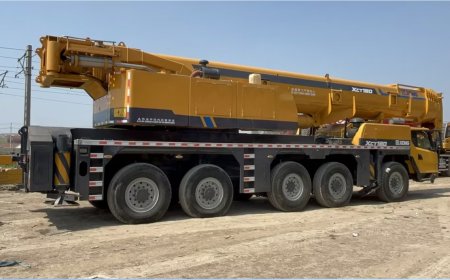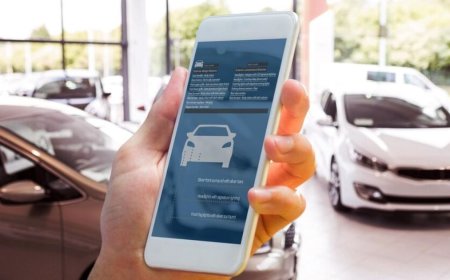Turo Clone App Development: A Guide for Auto Rental Enterprises and Investors
Discover how to develop a Turo clone app for the growing car rental market. Key features, development steps, and why it’s a profitable opportunity for auto rental enterprises and investors.

The car rental industry is undergoing a massive transformation, thanks in part to the increasing popularity of peer-to-peer (P2P) car-sharing platforms like Turo. With rising consumer demand for more flexible, cost-effective, and convenient rental options, the traditional car rental model is facing significant disruption. To remain competitive and tap into this rapidly growing market, auto rental enterprises and investors are looking for innovative solutions. One of the most effective strategies is developing a Turo clone appa mobile or web platform that offers a similar user experience to Turo but with your brand's unique value proposition.
This article serves as a comprehensive guide to developing a Turo-like app that caters to the evolving needs of todays consumers. Well explore why businesses should consider creating a car rental app like Turo, the key features and functionalities of such platforms, and the technical and operational aspects of building and launching your own Turo clone app.
Why Consider Building a Turo Clone App?
The Rise of Peer-to-Peer Car Rentals
The traditional car rental model has served the global market for decades, but its no longer the only option for customers. Today, more and more people are turning to P2P car rental platforms like Turo as an alternative. These platforms offer greater flexibility, more vehicle variety, and often lower prices than traditional rental services. Instead of relying on a centralized fleet owned by a rental company, P2P platforms allow private car owners to rent out their vehicles, giving users access to unique cars for short-term use.
Turo-like apps have capitalized on this growing trend. They empower both car owners and renters by creating a mutually beneficial ecosystem where car owners can monetize their vehicles, and renters can choose from a wide range of cars that meet their specific needs. The appeal lies in the simplicity, cost-effectiveness, and the ability to access a car on-demand.
With this in mind, investing in a Turo clone app offers auto rental enterprises and investors an opportunity to tap into the lucrative market of car-sharing services and P2P rentals. Additionally, by using white-label car rental management software, businesses can quickly build a platform that rivals Turo's success without reinventing the wheel.
Key Features of a Turo Clone App
Building a successful Turo-like app requires integrating a set of core features that align with the expectations of modern consumers. The success of the platform depends on its ease of use, reliability, and ability to meet the needs of both car owners and renters. Below are the essential features that should be incorporated into a Turo clone app:
1. User Profiles & Registration
Both car owners and renters must be able to create detailed profiles that help establish trust within the platform. The registration process should be simple, with options for users to sign up using email, social media accounts, or other integrations. A solid user profile can include:
-
Personal information (name, phone number, email)
-
Verification status (ID verification for car owners)
-
Payment details
2. Car Listings & Search Functionality
For the car rental app like Turo to function smoothly, it should allow car owners to easily list their vehicles. The listing feature should include:
-
Car description (make, model, year, etc.)
-
Availability calendar
-
Pricing model (hourly, daily, weekly rates)
-
Vehicle photos and condition reports
-
Options for insurance and additional services
Renters should be able to search for cars based on various filters, such as location, car type, price range, and rental dates.
3. Booking & Payment System
The booking feature is the backbone of any car rental app. Renters must be able to book a car quickly and seamlessly. The system should allow for real-time availability, booking confirmation, and payment processing. The payment system should:
-
Support multiple payment gateways (credit/debit cards, mobile wallets, etc.)
-
Include an option for security deposits
-
Allow for cancellations and refunds in compliance with business rules
-
Integrate with local currency systems for international users
4. Ratings and Reviews
Trust and credibility are essential for P2P car-sharing platforms. Renters should be able to leave ratings and reviews for both the vehicle and the owner after each rental experience. These ratings help new users make informed decisions and foster transparency on the platform.
5. Push Notifications & Alerts
Effective communication is crucial for both car owners and renters. Push notifications should alert users about:
-
Booking confirmations
-
Upcoming reservations
-
New car listings or promotions
-
Payment transactions
-
Customer support responses
This keeps users engaged and informed, ensuring smooth operations throughout the rental process.
6. GPS Tracking & Vehicle Management
Integrating GPS tracking ensures that both renters and owners can track the location of the vehicle during the rental period. GPS can also be used to:
-
Provide an accurate return location
-
Monitor vehicle health and usage patterns
-
Enable theft protection and emergency alerts
A car rental management software can also help businesses keep track of their fleet's usage, condition, and maintenance schedule.
7. Insurance & Legal Documentation
To protect both car owners and renters, offering insurance options is a must. The Turo clone app should provide:
-
Insurance for renters in case of accidents or damages
-
Liability coverage for car owners
-
A digital contract for every rental agreement
-
Terms and conditions for both parties
These features add an extra layer of security, reassuring users that their transactions are protected.
8. Admin Panel for Fleet Management
For business owners, an admin panel is essential for overseeing the platforms operations. The admin panel allows car rental businesses to manage the following:
-
Car listings and bookings
-
User accounts (both renters and car owners)
-
Payment processing and revenue generation
-
Customer support and dispute resolution
-
Reports and analytics
This centralized control system is crucial for scaling the business and maintaining operational efficiency.
Steps for Developing a Turo Clone App
Now that you know what features should be included in your Turo clone, the next step is to break down the app development process into clear phases:
1. Define Your Business Model
Before you even begin development, its essential to define your business model. Will you charge a commission for each booking, offer subscription services to car owners, or focus on a freemium model with in-app purchases? Understanding your monetization strategy will inform your apps design and user flow.
2. Select the Right Technology Stack
Choosing the appropriate technology stack is critical for building a scalable and secure app. Your app should be available on both iOS and Android to reach the broadest possible audience. You will also need a robust backend system to handle real-time bookings, payments, and user data. Common technologies for building Turo-like apps include:
-
Frontend: React Native, Flutter (for cross-platform mobile app development)
-
Backend: Node.js, Ruby on Rails, or Django
-
Database: PostgreSQL, MySQL, or MongoDB
-
Cloud Hosting: AWS, Google Cloud, or Azure
3. Partner with an On-Demand App Development Company
Developing a car rental app like Turo requires expertise in building complex on-demand platforms. Partnering with a reputable on-demand app development company can streamline the process, ensuring high-quality, scalable solutions. Experienced developers will help you create custom features, ensure security, and deploy your app efficiently.
4. Design UI/UX for Seamless User Experience
The design of your Turo clone app plays a significant role in attracting and retaining users. Focus on creating an intuitive, user-friendly interface that makes it easy for car owners to list their vehicles and for renters to book them. Prioritize speed, minimalism, and clarity in the design.
5. Testing and Quality Assurance
Before launching, thorough testing is crucial to ensure the app functions as intended. Perform both functional testing (checking individual features) and usability testing (ensuring a seamless user experience). Pay special attention to payment systems, booking functionality, and GPS tracking.
6. Launch and Marketing
Once your app is ready, its time to launch. Consider soft-launching in select markets to gather feedback and iron out any bugs. Once youve optimized the app, launch it globally and implement a marketing strategy that includes digital advertising, social media promotions, and partnerships with car rental businesses or influencers in the industry.
Conclusion
The Turo clone app presents an exciting opportunity for auto rental enterprises and investors to tap into the growing demand for flexible, on-demand car rentals. By offering a Turo-like app, businesses can provide car owners with a platform to monetize their vehicles while meeting the needs of consumers who want greater access to rental cars with fewer restrictions.
Building a Turo clone requires careful planning, the right technology, and attention to user experience. With the right car rental management software and a partnership with an experienced on-demand app development company, businesses can successfully enter the lucrative car rental market and position themselves for growth in the shared economy.



































